Archive Monthly Archives: March 2019
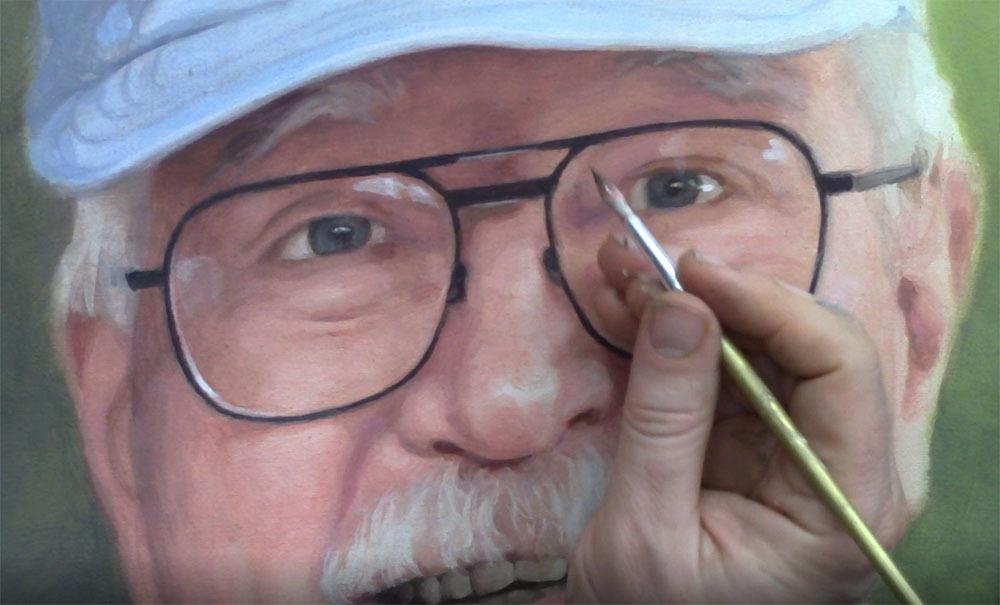
Paint Realistic Reflections on Eyeglasses in an Acrylic Portrait
It’s tricky to paint reflections on eyeglasses.
But it’s a very important detail in an acrylic portrait where the subject is wearing them and you want it to look realistic. Let me show you how to do it, using the acrylic glazing technique, in this quick video tutorial.
This is a 16 x 20 acrylic on canvas commissioned portrait, and I just delivered it to the client today. She loved it. It was a memoriam portrait, so I pray it will bring comfort to all who see it.
Have a blessed day, and may God use your artistic gifts to bless people far and wide.
All the best,

P.S. Did you find this post helpful or encouraging? If so, send it on ahead! Let others know with the share buttons below. I’d love to hear your comments. Thank you so much! Also, do you have a question on acrylic portrait painting you’d like answered? Let me know, and I’d be happy to help!
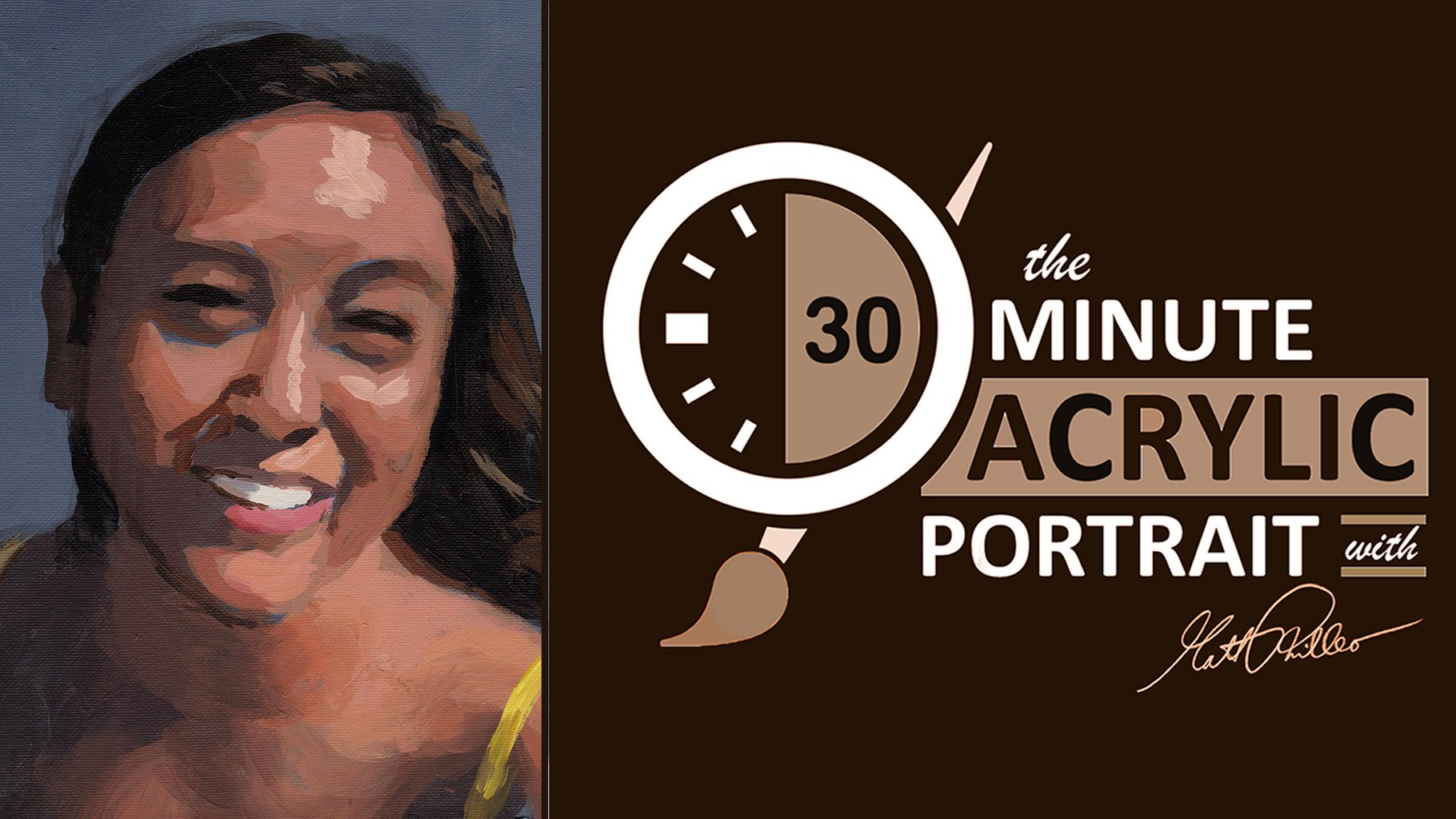
The 30-Minute Acrylic Portrait: “Smiling Girl in Yellow”
Thanks for joining me on another adventure of painting a quick, loosely-realistic alla prima acrylic portrait, real-time, in a half an hour.
For today’s portrait, I’ll be painting a picture of a young woman ( a still shot image from Ray Comfort’s video interviews ) with a beautiful dark complexion and attractive smile. I like the dark shadows and forms within her face and hair, and I thought it would make for a fantastic little portrait.
This will be an 8 x 10, acrylic on canvas board.
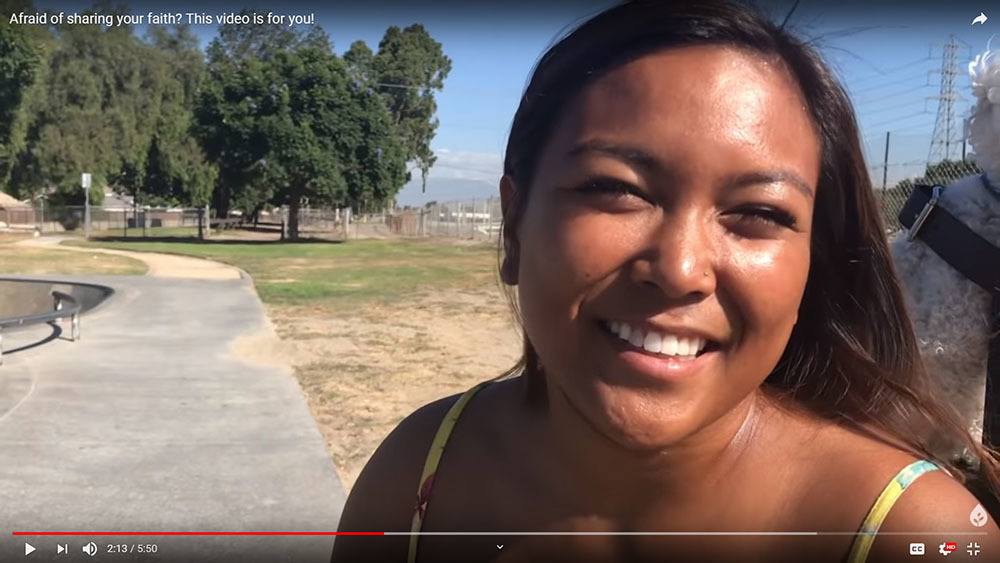
McKaela, still shot image from Ray Comfort/ Living Waters footage used for alla prima acrylic portrait by artist Matt Philleo, 2019, used with permission.
I’ll demonstrate how you can paint a quick portrait study with an aggressive opaque, alla prima technique. The idea is to see what you can accomplish within 30 minutes. It will force you to think quickly, and find out what the most important aspects are that will convey the subject’s likeness and just paint them without fuss.
At the same time, I encourage you to enjoy the process and don’t fret over whether the painting looks good or not. Of course it won’t look as good as a painting you’ve spent hours on! But it’s OK. Just enjoy the process.
Later on, you can always add more layers to the painting and give it a finished look.
Ready to dive in?
Season 1, Episode 3 of the 30-Minute Acrylic Portrait…
After watching it, leave me a comment here below. I really look forward to reading and answering your thoughts and questions. Let me know how I can help and have a blessed and productive day!
Yours for better portraits,

P.S. Did you find this post helpful or encouraging? If so, send it on ahead! Let others know with the share buttons below. I’d love to hear your comments. Thank you so much! Also, do you have a question on acrylic portrait painting you’d like answered? Let me know, and I’d be happy to help!
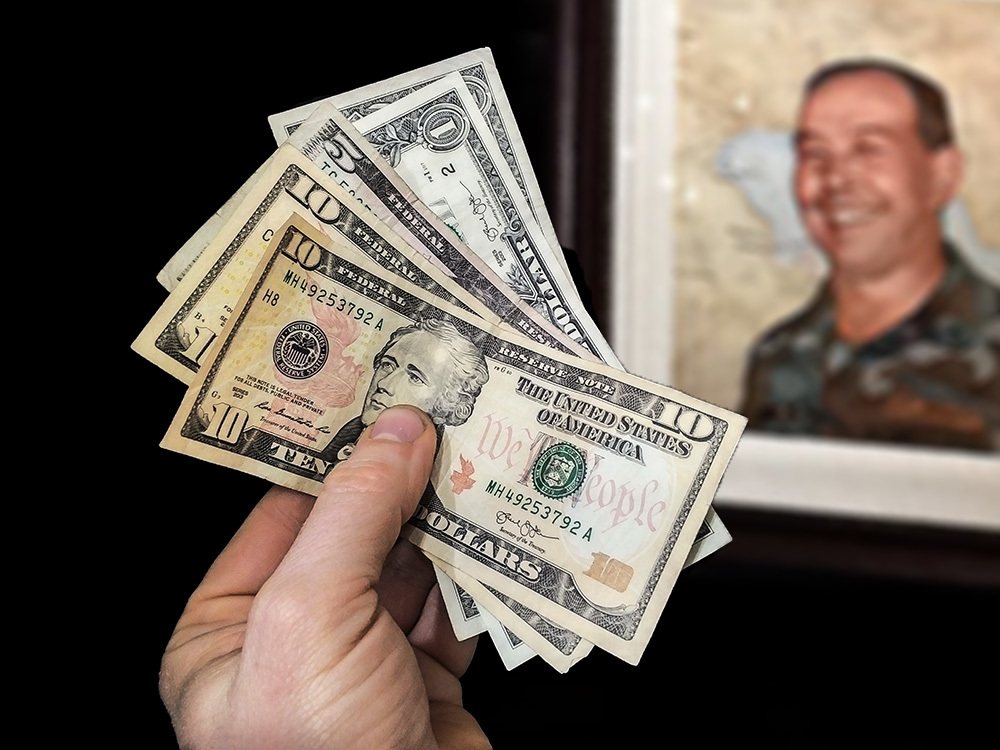
How Much Should You Charge for a Portrait?
One question I’m asked again and again is, “How much should I charge for a portrait?”
I was asked this question twice in the last two days, so I figure it would be good to answer this in an article.
As a professional portrait painter, I know that what I charge for my portraits affects my bottom line. If I don’t charge enough, I don’t make enough money to keep painting. If I charge too much, I might price myself out of the market.
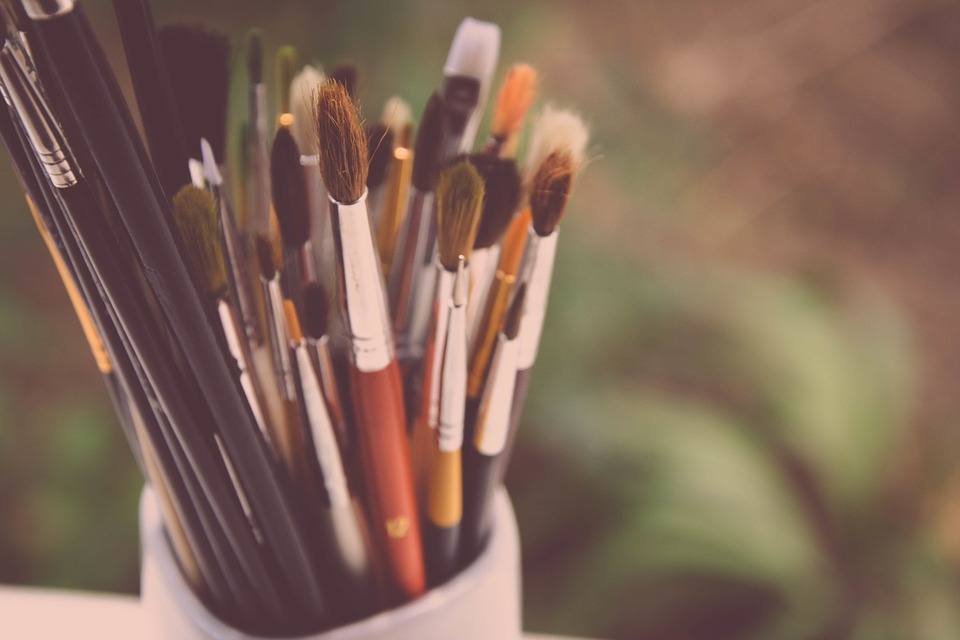
Practical tips on how to price your acrylic portrait painting
You may be asking the same thing? What should you do?
There are many factors in pricing.
It depends how long you have been in business, the level of quality of your work, and how much detail will be in your portrait. I charge by the square inch. I have a pricing formula that I came up with where the price increases exponentially as you increase the size of the painting and add more detail (subjects)
Here is what I charge (as of 2019). I can’t say that it will work for you. (Please, DO NOT copy my prices. I am showing it just as an example. )
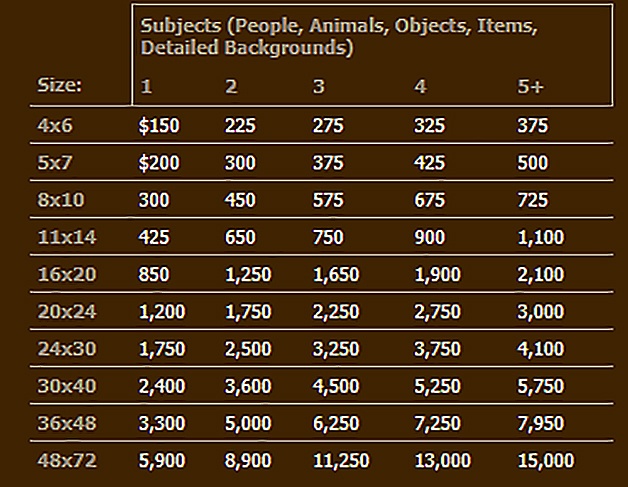
Acrylic Portrait from photo, commissioned paintings by Eau Claire portrait artist Matt Philleo, 2019 prices
A 16 x 20 with one person—I charge $850 for that. If there are 5 or more subjects (people, objects, detailed backgrounds, etc. ) in the portrait I charge $2,100. The reason I charge more is that it will take longer to paint all the extra detail.
But I have been painting for many years and my prices were less than half this amount when I started out painting portraits full-time, in 2014. Here is my price chart for that year.
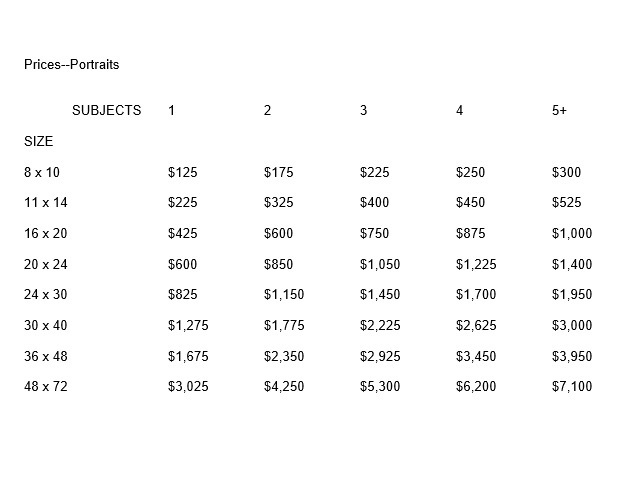
Portraits from a photo, acrylic portrait by Eau Claire portrait artist Matt Philleo, 2014 prices
You can see my prices have almost doubled since 2014. And amazingly, at that time, I was struggling to get even one commission! I remember praying every day for a month for a commission, after doing all I knew to do to bring in some work. God did provide one eventually, but I need to learn to trust in Him and be patient. That’s a story for another day. 🙂
The point I’m trying to make is that charging less for your work does not equate to more sales. When I first started I thought I was going well to make minimum wage. That was foolish, because we aren’t painting 100% of the time and we have materials and marketing costs. My wife encouraged me to raise my prices. I was scared to, but it didn’t hurt my business at all. I have been raising them slowly, about 10-20% every year.
So, then, should you charge more at the onset and just watch the sales roll in?
No. It doesn’t work that way either. Charge a fair price for your work, be patient, keep doing portraits, don’t give up when it’s tough, and you will see the results. Raise your prices over time as you build up your clientele.
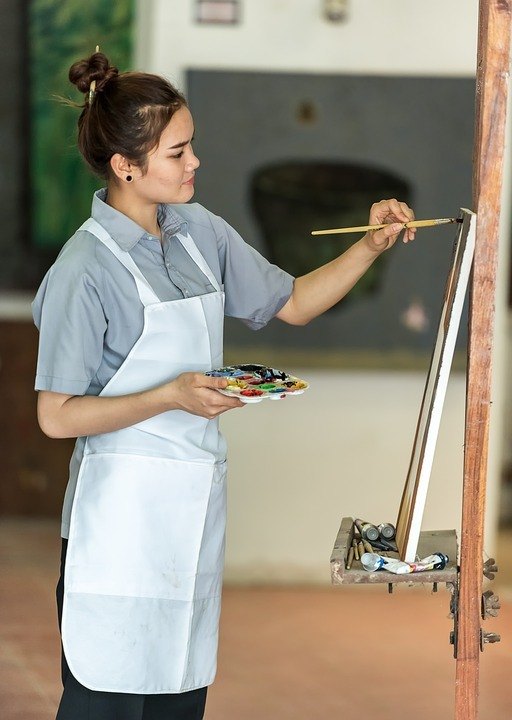
I try to get paid $50 an hour on my portraits. ( I don’t charge by the hour. This is what I average on my projects.)
Figure out what you’d like to get paid per hour. Then charge approximately 50% more because, as I mentioned earlier, you won’t be painting all the time (you’ve got other business-y things to do) and you have paint and brushes to buy.
Here are some more helpful tips in pricing your art.
1. First of all, create a price chart as I did. This is HUGE. Going to a client meeting to discuss a portrait without a price chart in hand is like going to a smorgasbord buffet line without a plate in hand. It’s going to be messy.
With a price chart all you need to do is ask your client what size they would like–roughly–and then show them a couple of options. You should know how many people will be in the portrait. You simply show them the chart and say, “an 16 x 20 with two subjects will be this much, and a 24 x 30 will be this.” You point to the prices and let the chart do the work.
Let them decide what they want.
There are no negotiations on the price. Because the client sees you have a precise criterion for what you charge—it makes sense—they will not quibble with your price. I can’t recall a time that’s ever happened to me.
Interestingly, I do remember a time when I negotiated my own price down. I offered my client a price that was lower than what I originally quoted. She took the lower price but looked at me strangely and the whole situation was awkward. And I needlessly lost money on the job. Ouch.
Don’t do what I did in that situation.
Quote your price and hold to it. Let them respond.

How to successfully price your portrait paintings
2. Then, once you have the client locked in on a price, encourage them to pay a down deposit on the spot. If you just give them a business card and let them walk away, chances are, you’ll lose the commission. Of course, if they need to discuss it with another decision maker, that’s fine. But get their phone number or email address so you can follow up with them.
Most of the time, however, they’ll be ready to make a decision if they indeed want a portrait, and not just merely curious.
You can tell them you need the deposit so that you’ll have them booked. That way you can get to their portrait faster.
A deposit is also very important because, with it, the client has “skin in the game.” They’re not as likely to back out of the project.
How much should you ask for a deposit? I ask for 25% up front. Some do 50. But I like 25, because it’s a little less risk for the client to take on, and it also gives me more incentive to finish the project. I get paid a larger amount at the end.
3. Never charge people more because you think they are rich, or less because you think they are poor. Just charge what you charge. Have a size for any budget. The price chart is your best friend. Then you can always point people to your price list and let it do the selling for you.
4. Don’t compete on price. It may be helpful to see what other artists are charging to gauge what you might be able to charge, but don’t make the mistake of thinking you have to beat other artists’ prices. You’re not Walmart. You’re an artist. People will purchase art from you, because they know, like and trust you. They appreciate your unique style, your experience, personality, your connection to them, and that’s a big part of why they will buy from you. So as long as they can technically afford your prices, they will pay them, even if Joe Artist down the street has prices 50% less than you.
5. Never deliver your painting without payment in hand. If you meet with the client personally to deliver the painting, let them know beforehand that you would like to exchange payment for the finished product on the spot. If you are shipping the painting, show them a proof image of the portrait. Once they approve it, ask for the balance to paid in full (along with shipping charges.) When they make payment, then promptly ship the artwork.
That’s it! Of course, there’s more nuances than this to pricing your work, but this article should give you some good information on how to do it, if you’re just starting out in acrylic portrait painting.
Let me know how this helps.
If you are an artist who does commissioned portraits, do you have any tips to share on how YOU price your work? Please share your thoughts in the comments below. 🙂
Yours for better portraits,

P.S. Did you find this post helpful or encouraging? If so, send it on ahead! Let others know with the share buttons below. I’d love to hear your comments. Thank you so much! Also, do you have a question on acrylic portrait painting you’d like answered? Let me know, and I’d be happy to help!
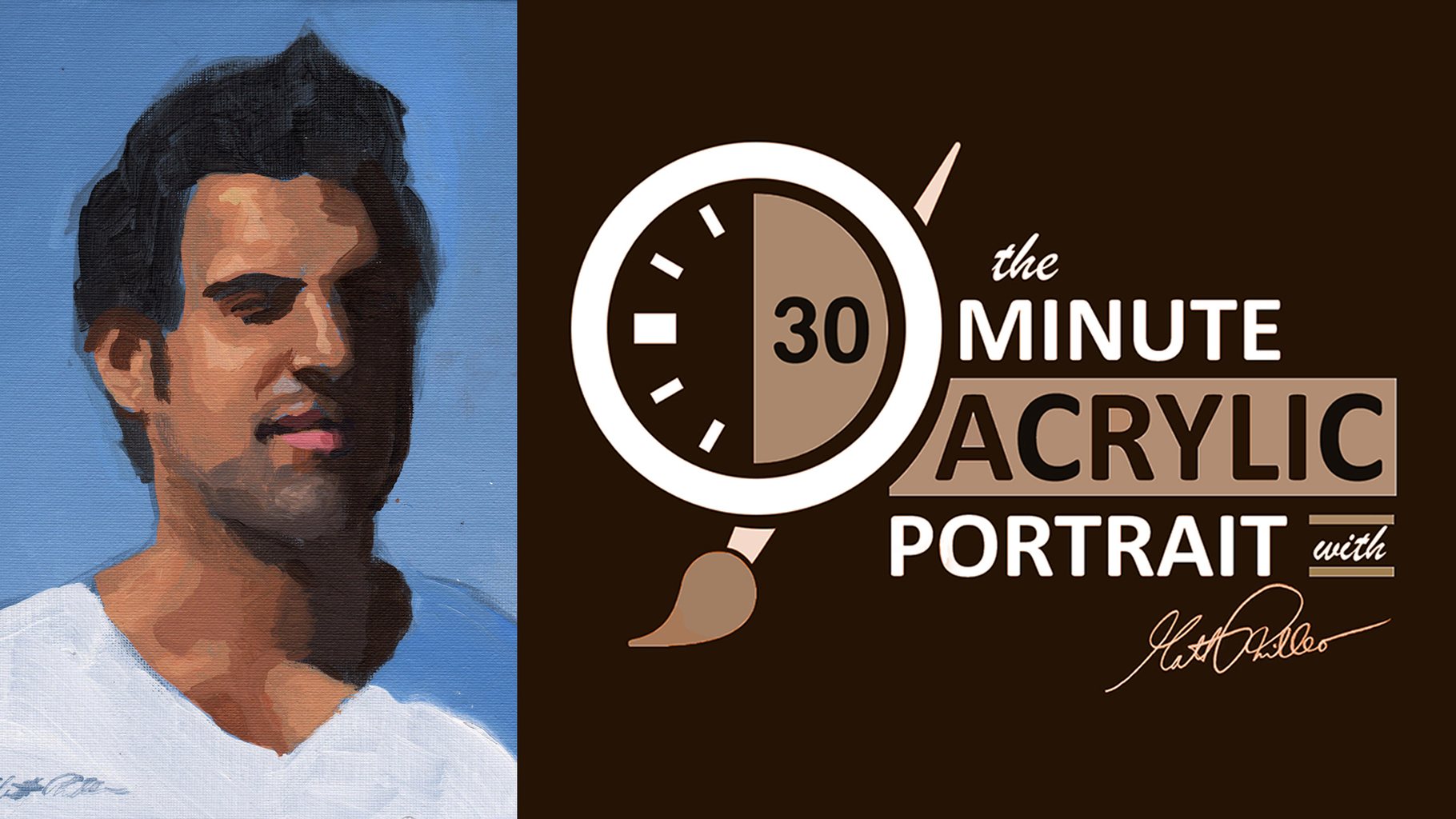
The 30-Minute Acrylic Portrait: “Young Man in White”
Thank you to everyone who left encouraging comments and kind words on my first episode of the “30-Minute Acrylic Portrait.” Now, it’s on to Episode #2.
For today’s portrait, I’ll be painting a picture of a young man dressed in white, named Mohammed.
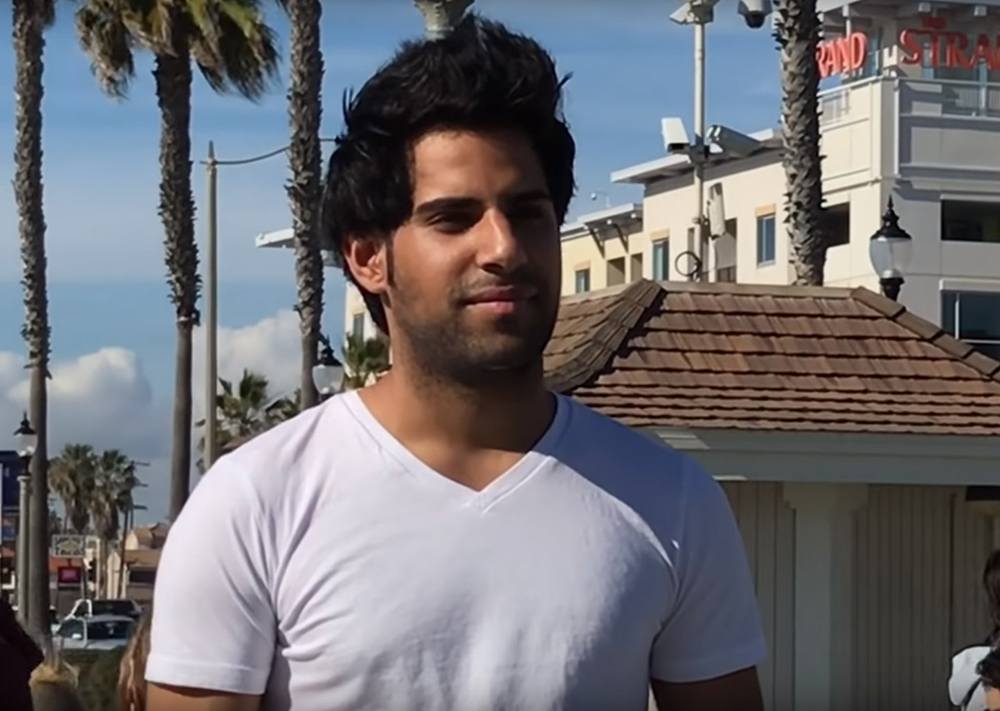
Reference photo for 30-Minute Acrylic Portrait, used with permission from Ray Comfort at Living Waters Publications
How did I come across this photo?
Well, I was looking for interesting reference images to paint from, scouring the internet and couldn’t find much. Even stock photo sites like Pexels and Pixabay came up short.
Then I recalled a YouTube channel that I frequently watch (or have playing in the background as I paint): Living Waters.
On this channel, there are literally hundreds of videos of people being interviewed by Ray Comfort, a Christian author, evangelist and short movie producer. Every person is different and unique. I noticed the lighting on several of these interesting characters was fantastic, and the video quality high enough that I could grab some screenshots of the footage and then paint from them.

Living Waters YouTube Channel–reference photos for paintings, used with permission
Of course, I needed to get permission first.
So I contacted the ministry’s general email address, and got an expected automated response.
The next day, however, I got an unexpected call from Ray Comfort, granting me permission to paint portraits based on his videos. I was blown away by his generosity and thought this was also another confirmation from God to continue doing the series. I should have enough images to keep me busy for months, maybe even years. 🙂
So here we go.
Season 1, Episode 2 of the 30-Minute Acrylic Portrait…
As always, let me know what you think of this video. I encourage you to try this exercise for yourself. You don’t have to feel pressured to come up with a masterpiece. Just enjoy the process and see what you can do within half an hour.
Or you might just want to keep watching these videos for fun, sipping some coffee or tea. 🙂 Either way, thank you for watching, and I look forward to sharing more with you.
Yours for better portraits,

P.S. Did you find this post helpful or encouraging? If so, send it on ahead! Let others know with the share buttons below. I’d love to hear your comments. Thank you so much! Also, do you have a question on acrylic portrait painting you’d like answered? Let me know, and I’d be happy to help!
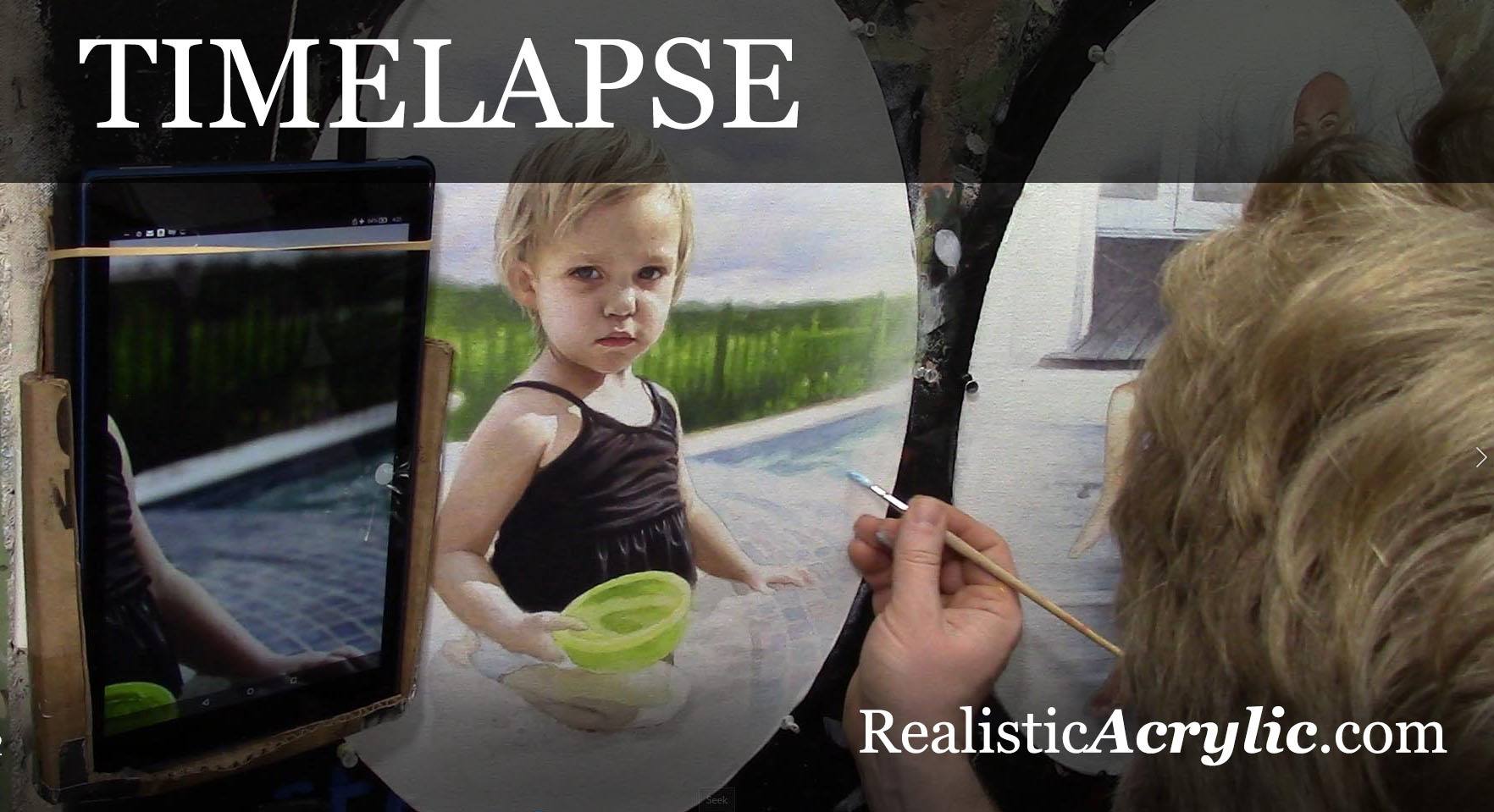
Oval Vignette Acrylic Portrait Timelapse
It’s fun to paint a portrait using the acrylic glazing technique. Although it takes a little longer, it allows you the ability to build up some fantastic depth, color saturation, and shading.
In this painting I did toward the end of 2018, actually two 14″ x 20″ oval vignette bubble portraits, I demonstrate how the glazing technique works, in about nine minutes. If you would like to see the process, at a slower pace, with explanations of my technique, check out this post here.
And now for the 9-minute timelapse video…
Let me know how you enjoyed this video and if you have any questions on acrylic portrait painting, I’ll be happy to help.
Yours for better portraits,

P.S. Did you find this post helpful or encouraging? If so, send it on ahead! Let others know with the share buttons below. I’d love to hear your comments. Thank you so much! Also, do you have a question on acrylic portrait painting you’d like answered? Let me know, and I’d be happy to help!
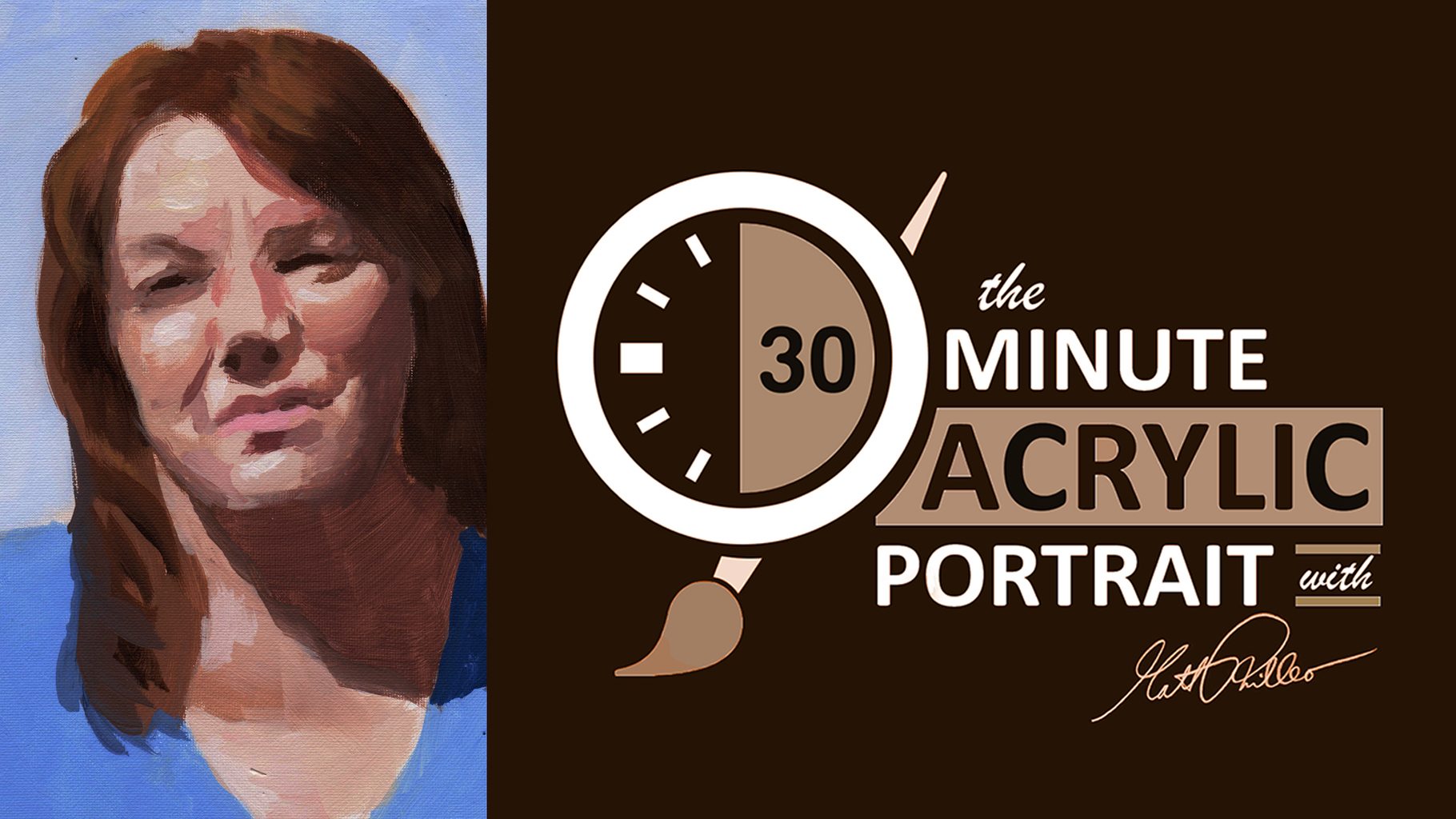
Paint an Acrylic Portrait in 30 Minutes
As a child, I was amazed as I watched “The Joy of Painting” host Bob Ross paint a beautiful landscape in less than 30 minutes. I was captivated by his gentle touch, his fast wet-on-wet technique, and the way he could totally put you at ease.
I can’t say I wanted to be just like Bob when I grew up, but he did help inspire me to paint.
Later on, I learned the more methodical glazing technique from Norbert Kox, where you apply layer after layer of translucent paint. It’s very time consuming, but it creates fantastic realistic effects. This is the style I have become known for.
But sometimes I just want to knock out a quick painting, have fun with it, and yet push myself.
Can I paint a somewhat respectable looking painting in half an hour?
If I do it often, will I get faster?
Could it help me paint faster, and more confidently in my “typical” more detailed portraits?
Could an exercise like this help YOU to do the same?
There’s only one way to find out.
So, with that, I’m launching a new series of videos, or something like a show called, “The 30-Minute Acrylic Portrait” Season One, Episode 1…
Let me know what you think of this video. Is it helpful? Interesting? Would you like to see more?
I’d love to hear back from you with your honest thoughts.
Yours for better portraits,

P.S. Did you find this post helpful or encouraging? If so, send it on ahead! Let others know with the share buttons below. I’d love to hear your comments. Thank you so much! Also, do you have a question on acrylic portrait painting you’d like answered? Let me know, and I’d be happy to help!
